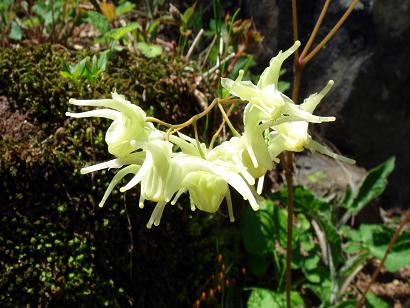| Family |
Berberidaceae |
| Subfamily |
Berberidoideae |
| Tribe |
Berberideae |
| Subtribe |
Epimediinae |
| Scientific name |
Epimedium koreanum Nakai |
| Synonyms |
Epimedium grandiflorum C. Morren subsp. koreanum (Nakai) Kitamura; Epimedium
macrosepalum Stearn; Epimedium sulphurellum Nakai |
| Common name |
(Japanese common name) ki-bana ikari-sou (キバナノイカリソウ, 黄花碇草 [meaning: yellow
flowers anchor weed]) |
| (English common name) none |
| Distribution |
(Japan) Hokkaido, Honshu |
| (Other nations) Korea, China |
| Habitat |
Mountane forest (Japan Sea side) |
| Chromosomal number |
2n=8 |
| Description |
Plants 20-40cm tall. Leaves biternate, leaflets each 5-15cm long. Flowers
yellow, flowering in April to May. Perennial plants. |
| Reference |
Epimedium koreanum Nakai |
| Polysaccharide PS-A obtained from barrenwort deriving from plants belonging
to the genus Epimedium, process for preparation thereof and phylactic and
immunostimulating agents comprising said polysaccharide PS-A effective
component (US Patent 4528188/1985) |
| Icariin preparations (US Patent 6123944/2000) |
| Compositions comprising icariside I and anhydroicaritin and methods for
making the same (US Patent 6399579/2002) |
| Safe pharmaceutical composition for treating and preventing infertility and increasing immune function (US Patent 6476203/2002) |
| Preparation of tobacco having reduced contents of nicotine and tar (US Patent 6772769/2004) |
| Medicament containing Epimedium extract for treatment of prostatic hyperplasia and prostatitis (US Patent 7250182/2007) |



